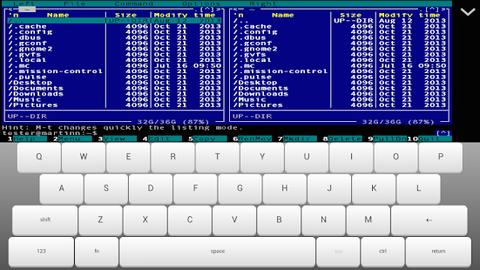
- Tinyterm unix card processor serial#
- Tinyterm unix card processor drivers#
- Tinyterm unix card processor driver#
- Tinyterm unix card processor windows#
So what about CPUs? In this case, Boiling Steam’s compiled stats show AMD having a market share of 50% as of January 2021, meaning it’s level-pegging with Intel.
Tinyterm unix card processor driver#
On the Nvidia front, its graphics driver is proprietary (closed) – although admittedly works well on Linux (that said, it depends on who you ask, to be fair), and of course there are advantages in terms of more powerful GPUs from Team Green, not to mention ray tracing (and DLSS, where version 2.0 has picked up serious momentum).ĪMD is, of course, striking back with its new Big Navi GPUs which finally provide some competition at the high-end – or at least they will do, when stock issues are resolved (the same is true of Nvidia’s RTX 3000 range on the supply front, as you’ve doubtless seen).
Tinyterm unix card processor drivers#
Overall, Linux gamers would appear to be increasingly adopting AMD graphics cards by some margin, then, likely aided by the fact that AMD’s drivers are open source, and the firm is willing to work with the community to improve them. At any rate, this much smaller sample set shows AMD with a 41.7% share, up from 30% in July 2019 (note that this data also takes in some laptops, as Intel is shown with a GPU share of 3.6%, meaning integrated graphics are being used). One commenter on the Boiling Steam article also pointed to GamingOnLinux (opens in new tab) stats, gleaned from just over 10,000 registered users on the site, via their profile data (although take that with a pinch of salt, obviously). Impressive growth for AMD on Linux, indeed.
Tinyterm unix card processor serial#
100MB files are a bit too large (in my opinion) to send via serial connection (nearly 30 hours at 9600 bps).What’s even more telling here is that if you look at the Boiling Steam stats for January 2019, the picture was similar to JPR with a 25% share for AMD – so that has leapt by a 50% increase over the course of two years. If you truly need this to be ongoing for a period of time, I think you'll have to seriously look into getting TCP running on that SCO box, or develop a serial-port transfer discussed above. Have you played with the CYGWIN utilities? These are a set of utilities to let you run UNIX-type processes on Windows. I've not heard of any utility to read a CPIO tape, but maybe one exists.

And, I've only used it to read floppy, not tape. In fact, the odds are slim that an old 16-bit utility would be granted the kind of hardware access required to manipulate the tape drive in XP.
Tinyterm unix card processor windows#
There's no guarantee it could run on current windows systems. I probably have a copy on 5 1/4" floppy somewhere at work. In any case, I wasn't able to locate much by searching the NET. I think we got ours from the Lone-Tar folks, but I'm not positive. RE: sco/unix to windows transfer fredericofonseca (IS/IT-Management) 10 Feb 06 12:14 If I create the files then let them get copied to tape using overnight back up how can I read them off the tape in windows? (When a backup occurs the data is written using CPIO through DD to DAT).Īny help suggestions or ideas would be gratefully appreciated!!!! I cannot read the back up tapes that are created by the sco/unix system in a windows pc, it just says the tape is in an invalid format. Is it possible to use the tape drive using something like doscp to copy the files to tape? However I want to move several quite big files (100MB each) how can I do this? Small amounts of data can be moved using the doscp command and floppy drive. The windows XP machine does have compatible DAT drive also.

It has no modern network card so a direct ftp transfer is out of the question.

The problem is that the sco/unix system only has a floppy drive or a DAT drive as removable media. I have an ageing sco/unix 3.2 system from which I would like to transfer some data to a windows xp PC.


 0 kommentar(er)
0 kommentar(er)
